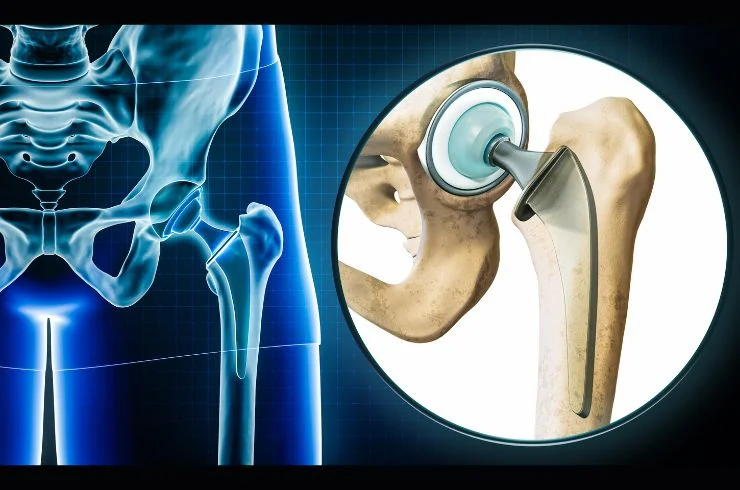Hip Replacement
- Home
- Treatments
- Hip Replacement

Hip replacement surgery is a life-changing procedure designed to relieve pain and restore function in the hip joint, making it easier to walk, move, and live comfortably. This surgery replaces a damaged hip joint with an artificial one, typically made of metal, ceramic, or high-grade plastic. Commonly recommended for those with severe arthritis, hip fractures, or other degenerative joint diseases, a hip replacement can provide lasting relief and improve quality of life.
When is Hip Replacement Needed?
A hip replacement is often recommended when hip pain and stiffness significantly impact daily life. Common causes include:
- Osteoarthritis: The most common reason for hip replacements, osteoarthritis causes the cartilage cushioning the hip joint to wear down, leading to pain and stiffness.
- Rheumatoid Arthritis: This inflammatory condition damages joint tissues, causing swelling and deformity.
- Hip Fractures: A fracture can severely damage the hip, especially in older adults, making a replacement the best option for recovery.
- Avascular Necrosis: This condition restricts blood flow to the hip joint, resulting in bone damage and pain.
Symptoms Indicating a Need for Hip Replacement
Symptoms that often lead to hip replacement consideration include:
- Persistent Hip Pain: Pain that persists even during rest or limits mobility.
- Stiffness: Difficulty moving the hip joint, affecting activities like walking, bending, or climbing stairs.
- Reduced Quality of Life: Inability to enjoy daily activities due to pain or discomfort.
What to Expect from a Hip Replacement Procedure
The goal of hip replacement surgery is to relieve pain, improve function, and enhance quality of life. Here’s what’s involved:
- Initial Consultation: A thorough evaluation of your medical history, imaging tests, and lifestyle needs.
- Surgical Procedure: During surgery, the damaged hip joint is removed and replaced with a prosthetic joint.
- Rehabilitation: Physical therapy begins soon after surgery to help strengthen muscles, improve flexibility, and restore mobility.
Benefits and Recovery from Hip Replacement
A hip replacement can greatly enhance mobility and reduce chronic pain, leading to a more active lifestyle. Recovery typically involves:
- Pain Management: Medication to manage discomfort during initial healing.
- Physical Therapy: Exercises to strengthen the hip and improve movement.
- Gradual Return to Activities: Patients can often return to daily activities within a few weeks and may resume more demanding activities in a few months.

